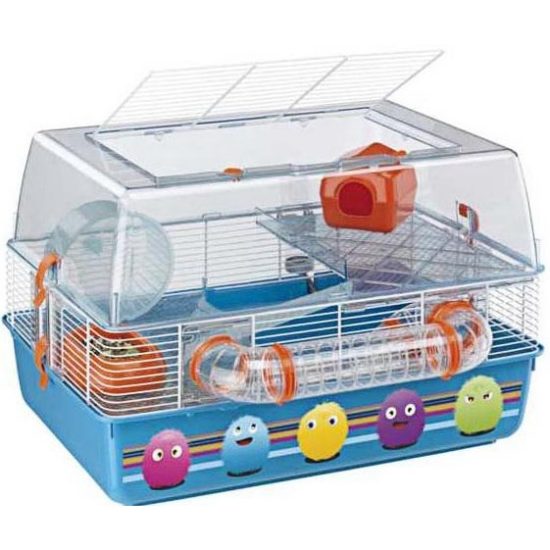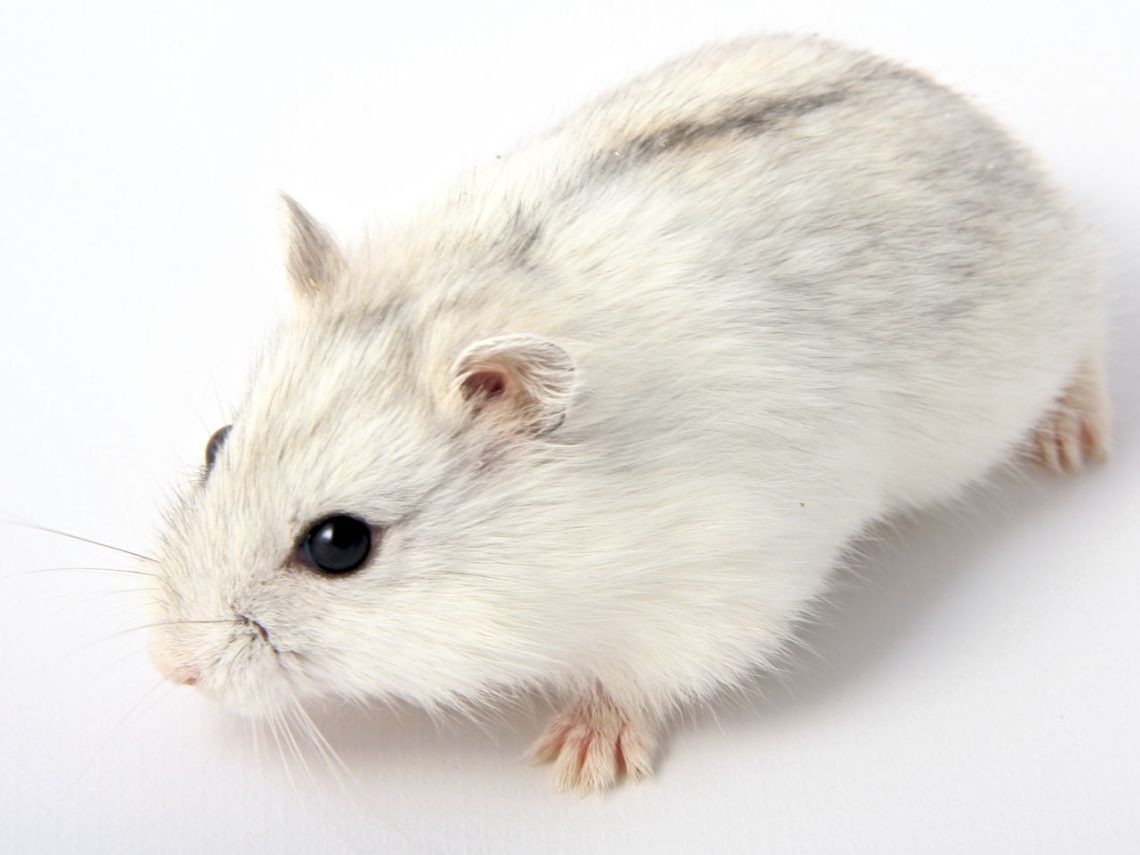
Djungarian hamster: care and maintenance of a djungarian at home (description with photo)
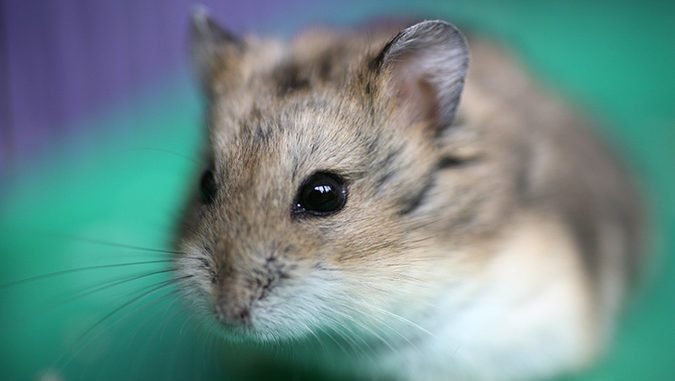
The first pet of a child can be a Djungarian hamster: care and maintenance will not require large amounts of money or time. Everything about Djungarian hamsters at home can now be read on the Web, so that the Djungarian live a relatively long and happy life, and bring only joy to the owners.
Contents
Habitat

Many are interested in where Djungarian hamsters live in nature in order to provide their pet with conditions that are as close to natural as possible. Dwarf hamsters are very widespread. They live in the steppes and semi-deserts of Kazakhstan, Asia, Russia (Western Siberia, Altai Territory). The name was given by the name of the province in northwestern China – Dzungaria. Sungur hamster (Phodopus sungorus) is an alternative name for the Dzhungari.
Thrifty rodents are loners. Each animal equips a hole with 4-6 entrances, up to a meter deep, where a pantry, a bedroom, and a latrine are located in various branches. They emerge from their burrows at dusk and at night. They feed on grass, seeds, berries, and insects.
Every day, the sungurik runs several kilometers in search of food.
On the grassy plains, tiny hamsters have many enemies – birds of prey, ferrets, ermines. To prevent the babies from becoming extinct, nature endowed them with a camouflage color and amazing fertility.
Appearance
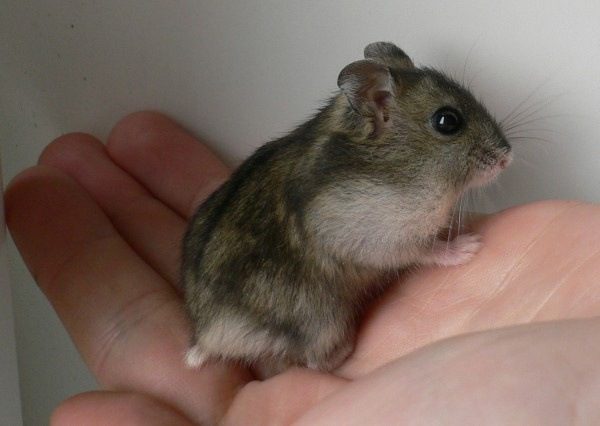
Dwarf hamsters are no more than 10 cm long and weigh 40-50 g. The animal is covered with thick short fur. The natural color is most common: the back is gray-brown, with a pronounced black stripe along the spine. The tummy is light, the paws are also white from the inside. The eyes are black, bulging, shiny.
Djungarian hamster colors
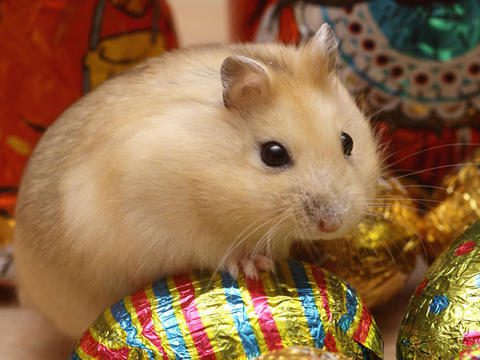
The natural color occurs most often, but in nurseries, by selecting spectacular mutations in wool, it was possible to obtain unusual colors. Tangerine repeats natural in pattern, but the fur is not dark, but light brown, red. Color “sapphire” – gray-blue.
The rarest is the “pearl”, the white Dzungarian hamster. The pearl color is characterized by the loss of a dark stripe along the ridge. The Djungarian hamster is never black or albino. Such a color variation indicates that this is Campbell, and not a sungurik.
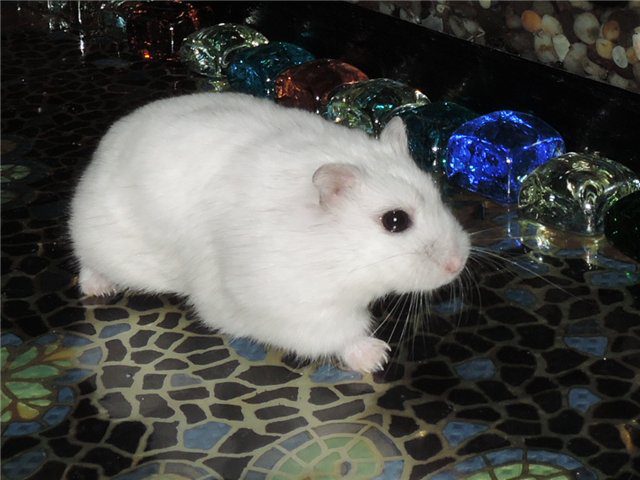
A pet of an unusual color requires a responsible attitude: a “colored” rodent is less resistant to adverse conditions and stress. So, red hamsters are carriers of the lethal gene, so individuals of the same color should not interbreed with each other.
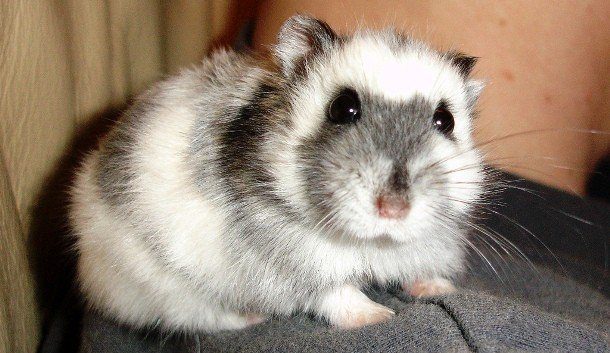
In the wild, dark Djungarian hamsters are subject to seasonal molting. They brighten: turn white or gray, although a dark stripe on the back remains. In an apartment, such a phenomenon is a rarity, because the temperature does not drop below 16 C, and daylight hours are constant.
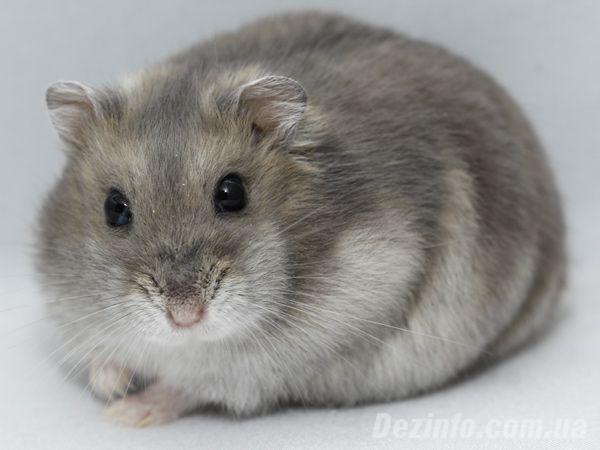
Maintenance and nutrition: equipment
It is not difficult to take care of a dzhungarik, even children can cope with this task. But for this you need to properly organize a hamster life. The main rule is that the hamster must have its own home. If you want to have two hamsters, you will need 2 cages.
Cell
Despite the tiny size of the pet, the cage should be as large as possible, at least 50×30 cm. Single-tiered cages are recommended to avoid injury. Instead of the usual lattice structure with a plastic pallet, you should look at closed “dunes” and cages with plastic inserts. Pipes and tunnels will help the animal feel at home. Good options:
Ferplast «Duna Fun» 
Fop «Charlie Prestige»
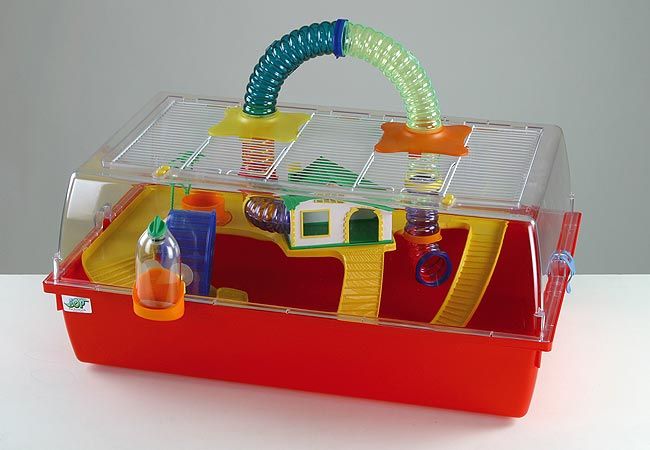
IMAC Fantasy, 58x38x38,5 cm
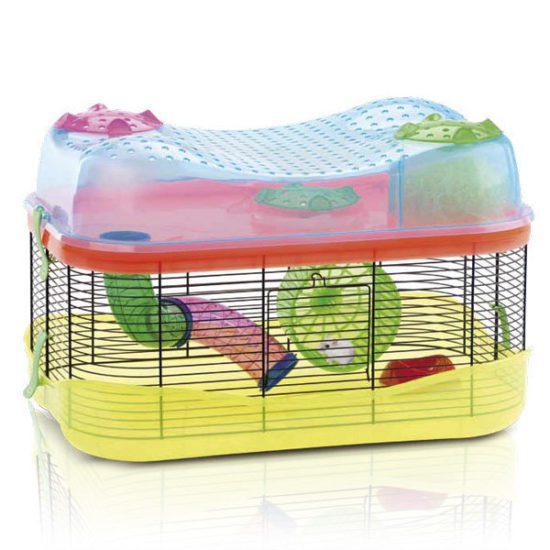
The cage is placed in a quiet place, protected from the sun and drafts. It must have a house so that the beloved rodent can retire. A small (10 cm long) wooden house without windows and without a bottom is ideal for a dzhungarik. More information can be found on the page about choosing the right cage for the Djungarian hamster.
A thick layer of filler is poured onto the bottom – corn or cellulose, and white paper towels or napkins are placed in the house to build a nest.
“Gym”
A hamster needs to run several miles daily to stay healthy. In captivity, such activity can only be provided with the help of a running wheel. For a dwarf, the diameter should be 16-18 cm. It should not have crossbars, the surface should be solid or fine mesh so that the foot does not get stuck.
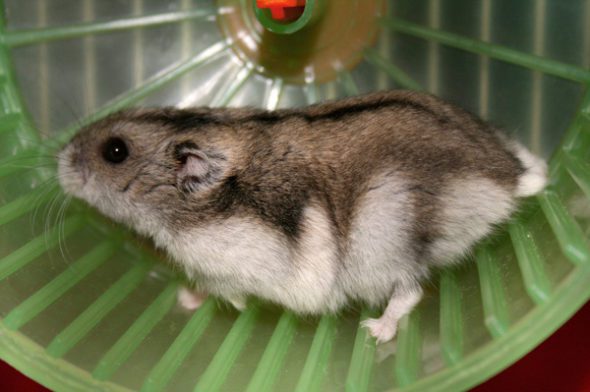
In addition to the wheel, walking balls are used. In it, the animal will be able to safely move around the apartment. It’s good if the owner organizes a playground: a labyrinth, tunnels.
Canteen equipment
The feeder is most often a small ceramic bowl: heavy enough not to tip over and easy to clean. A drinking bowl is obligatory, and a bowl of water is undesirable. It is better to hang a closed container: a nipple or ball drinker.
Food
The basis of the diet is grain mixture – ready-made food for dwarf hamsters. Because of the fast metabolism, the hamster eats a lot. To keep the pet healthy, they use food from trusted manufacturers: Versele-Laga “Mini Hamster Nature”, JR Farm, Vitakraft. Chika BIO “Food for Djungarian hamsters” can become an inexpensive domestic option.
In addition to grains, the pet is given juicy food (vegetables, fruits, berries, herbs), and occasionally protein food (boiled chicken, low-fat cottage cheese). Contrary to a common myth, a hamster cannot eat everything, eat “from the table”. You will have to carefully study the list of allowed and prohibited products, and stick to it.
In addition to food, they buy treats in the pet store – edible sticks and spikelets, a mineral stone for grinding teeth.
Other accessories (optional)
A small carrier cage is useful for taking your pet to the veterinary clinic when moving. Homa is planted in it during the general cleaning of the cage.
If the owner cares about the cleanliness of the fur and the absence of an unpleasant smell from the rodent, they buy a bathing container and special sand for chinchillas.
Care and feeding
If you explain to your child how to care for a hamster, the little owner will feel responsible for the pet. Hamsters are fed every day, in the evening, when the animal wakes up. Change the water in the drinker, it should always be fresh.
Daily spot cleaning is carried out in the cage. It is necessary to remove the remains of succulent feed in a timely manner in order to prevent spoilage and decay (revision of stocks). Remove accumulations of feces and wet bedding, adding fresh filler if necessary. Hamsters are clean, and organize a special toilet corner in the cage.
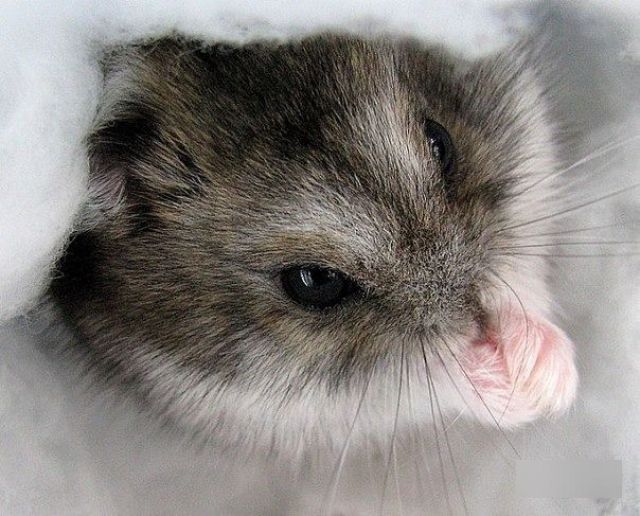
It is very important to keep the animal clean so that it does not get sick, but general cleaning with a complete change of bedding is stressful for hamsters. Wash the cage no more than once a week, using a sponge and fragrance-free laundry soap. Process all accessories: bowl, wheel, toys. The drinking bowl is dismantled and washed (the iron spout is cleaned of plaque and poured over with boiling water).
It is better to clean the cage according to the schedule (every 7-10 days), without waiting for a strong smell to appear. Even if heavily soiled, toxic chemicals like bleach should be avoided. To remove white spots from urine and eliminate the smell, use vinegar (apply for 15 minutes).
Hamsters have a very sensitive psyche. The rearrangement in the cage makes them nervous, especially with regard to the “pantry” – food reserves that the animal instinctively creates. With the regular destruction of the pantry, he becomes desperate, unsuccessfully trying to find a more secluded place in the cage. Therefore, you need to clean the pet’s house selectively, removing only products that are prone to spoilage. To reduce stress during general cleaning, some old filler and napkins from the nest are left in the cage.
Communication
Dzhungariki have an independent character, and are not too eager to communicate. To wean the animal from biting and fearlessly picking up, it will have to be patiently tamed day after day. Raising a hamster once and for the rest of your life will not work: if you do not contact him for 1-2 weeks, the pet will run wild again, and accustoming to hands starts anew.
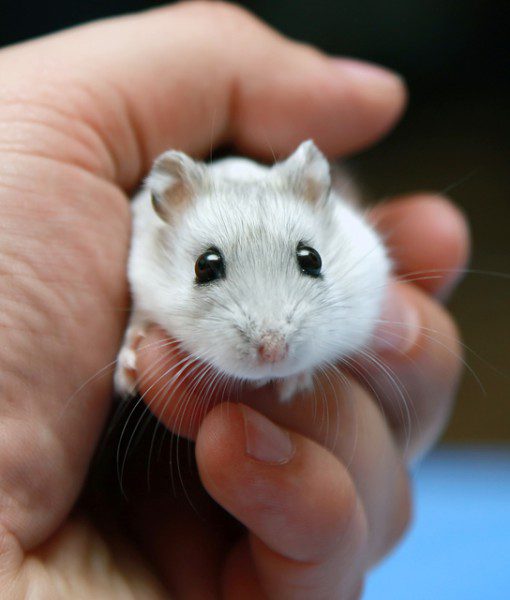
To keep an animal with a nocturnal lifestyle means not to disturb him during daytime sleep, being content with communication and observation of him in the evening hours. You will have to endure the noise at night: the hamster will run in the wheel, gnaw on the bars of the cage and toys, dig filler, rustle paper in the house.
Conclusion
It is not difficult to take care of jungars, the chores become even pleasant for the owner, who is sincerely attached to his pet. Cute habits and appearance make this variety of dwarf hamsters the most common household pet. With proper care, the animal will live 2 years or more. Although for a person this period seems regrettably small, in captivity hamsters live much longer than their wild counterparts.
If you are considering a Djungarian hamster as your pet, then before making a choice, we also recommend getting to know the Syrian hamster. The Syrian hamster is almost as popular as the Dzungarian, but it differs significantly from its counterpart.
Dzungarian hamster (dzhungarik): care and maintenance at home
3.7 (74.9%) 153 votes



